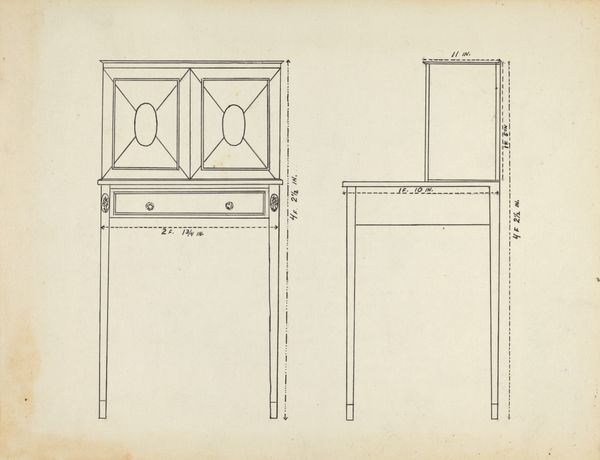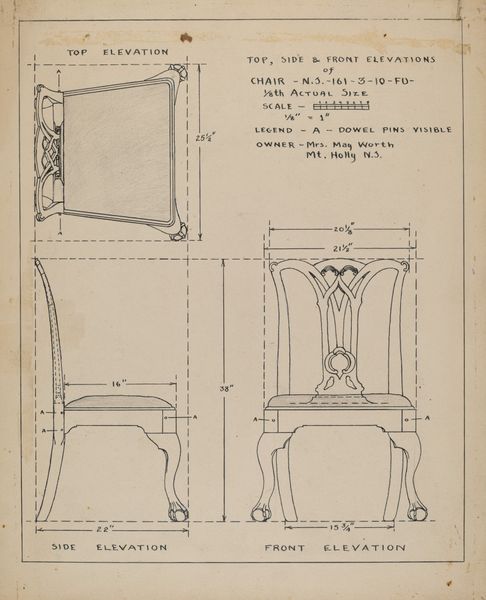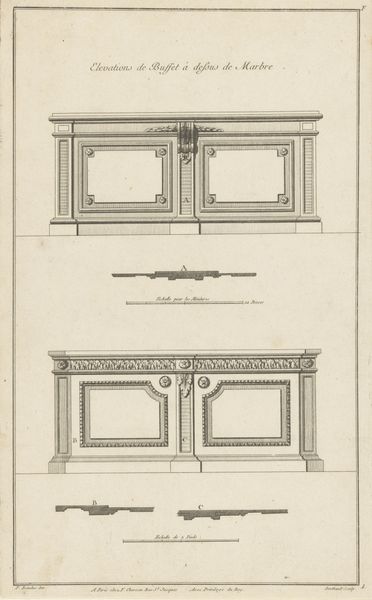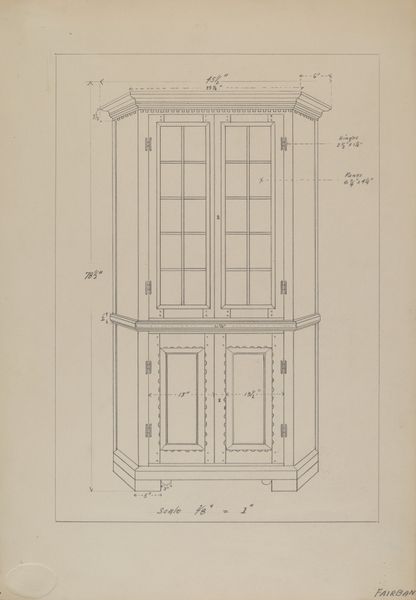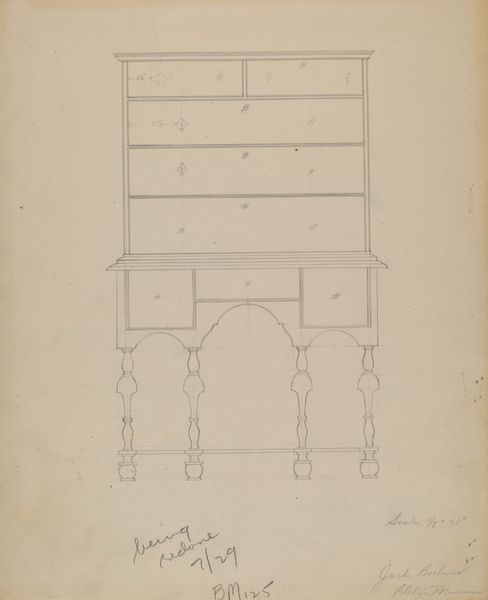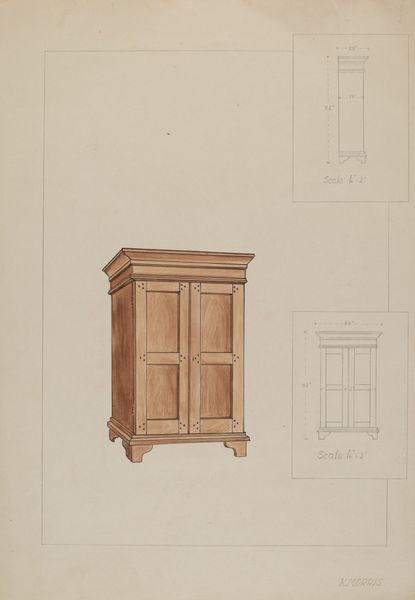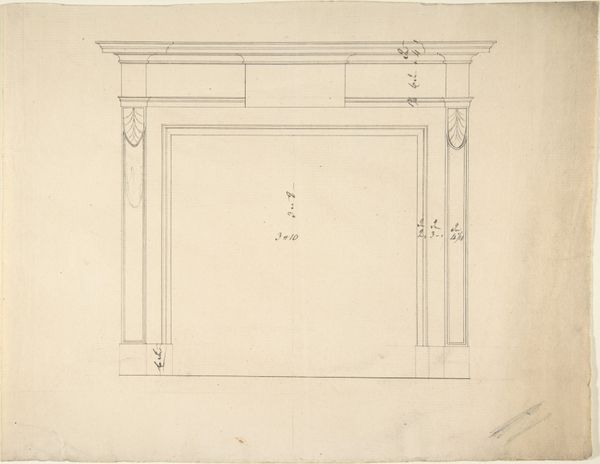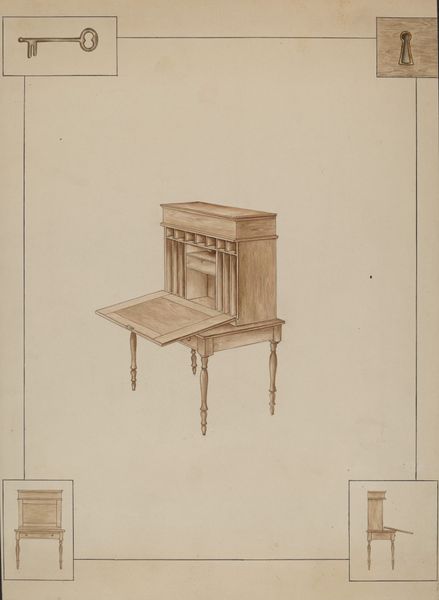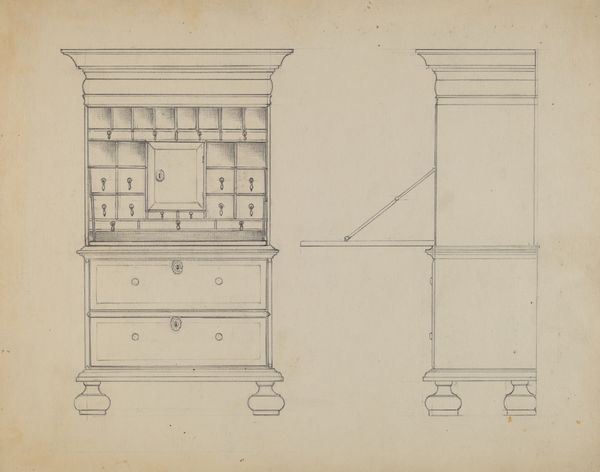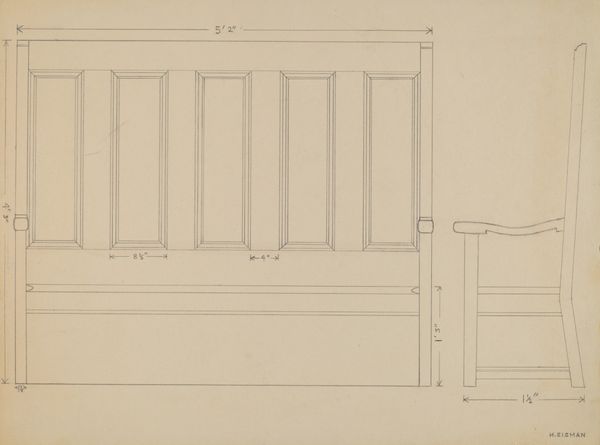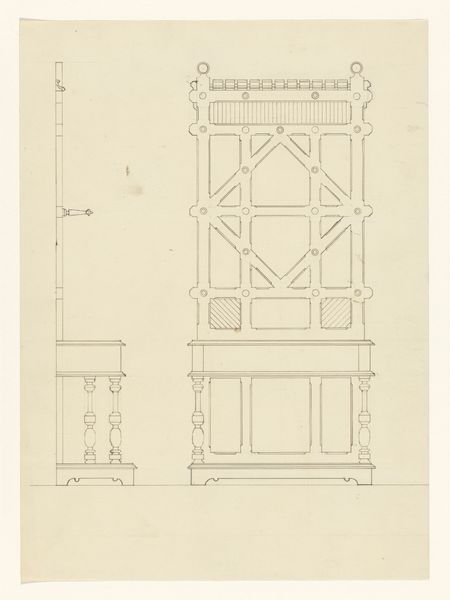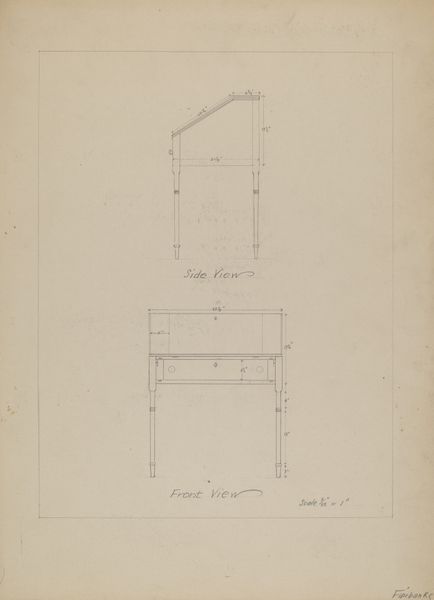
drawing, paper, ink
#
drawing
#
paper
#
ink
#
geometric
#
academic-art
Dimensions: overall: 30.6 x 22.9 cm (12 1/16 x 9 in.)
Copyright: National Gallery of Art: CC0 1.0
Curator: Here we have a drawing from between 1935 and 1942, identified as a “Chest,” rendered in ink on paper by an anonymous artist. What are your initial thoughts? Editor: The mechanical quality strikes me first. It's a design drawing for a combined writing desk and bookcase, meticulous but also strangely bloodless. I'm intrigued by the materials implied though – the wood, glass, and potential metal hinges are completely absent here. Curator: The geometric shapes of the glass cabinet doors definitely capture a specific sensibility. Look how the repeated diamonds evoke ideas of stability and precision in that period, but there's a potential for hidden symbolism, too; suggesting the owner’s aspirations. Editor: True, the symbolism is probably inherent, though what really gets me are the economic factors in its making. I can almost feel the hands drafting, the availability of materials influencing choices. How were these desks mass-produced, if at all? The social and labor context is totally missing. Curator: But the lack of flourish may speak to broader cultural values around functionality. In omitting excess adornment, isn’t it reflecting ideals about the responsible use of resources? What emotional power might a design such as this held to an audience, shaped perhaps through periods of social turmoil? Editor: Perhaps it was an aspiration during a difficult time. For me, though, the lack of visual 'flavour' reveals much about how commercial designs and aspirations get distilled into almost abstract plans. The real story lives in the materials and the crafting of the thing, and in the people who owned such pieces, or made them. Curator: So the chest’s apparent plainness may also serve as a symbol of functional ideals—a stark aesthetic, which held resonance beyond mere efficiency. The piece is ultimately both revealing and withholding its story, isn’t it? Editor: Exactly. It reminds us to look beneath the surface of utility, seeking out tangible remnants of that labour which often lies obscured.
Comments
No comments
Be the first to comment and join the conversation on the ultimate creative platform.
